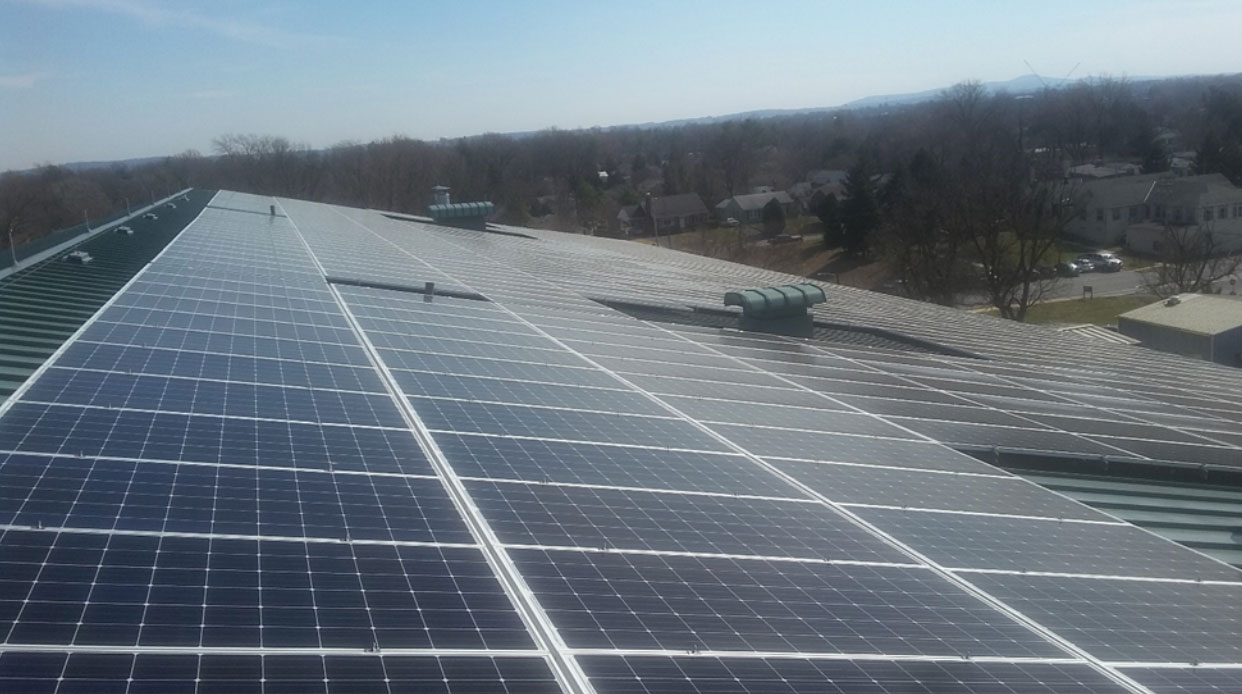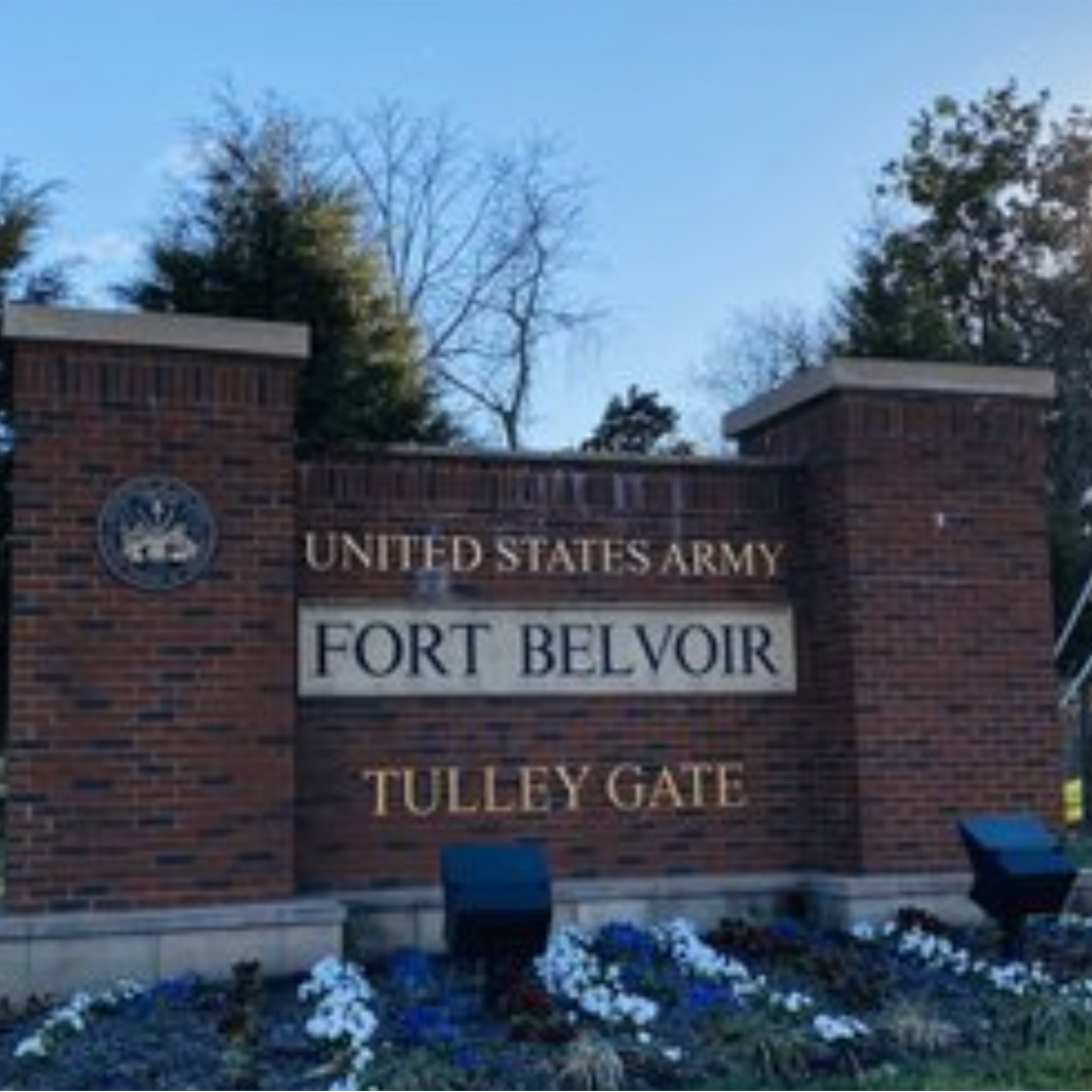Fort Detrick and Forest Glen Occupancy Sensors

U.S. Army Corps of Engineers Baltimore District Frederick National Laboratory of Cancer Research (FNLCR) Occupancy Sensors, 200 kWPV, and Thermostats at Fort Detrick in Frederick, MD and Forest Glen Annex, Maryland
This project was for the installation of occupancy sensors at the Fort Detrick and Forest Glen Annex for the reduction of energy usage garrison wide through the use of occupancy sensors and modified boiler controls. The projects objectives were to reduce energy usage garrison wide through the use of occupancy sensors and modified boiler controls by providing roof mounted solar array on Building 693 in an effort to meet Federal renewable energy production goals. Crystalline solar panels installed on the southwestern facing roof via clamps and supports made for use with standing seam metal roof material.
The existing roofing system and its attachment to the existing structural roof framing system were evaluated and modified, to support the 200 kW roof mounted PV system. Meltech provided modifications to the existing roof system design and construction for the entire facility roof system, and including all necessary ancillary and incidental work necessary to maintain a watertight roof system installation while allowing for the installation of the 200 kW roof mounted PV system. We coordinated with system manufacturer to maintain existing system warranty. We followed all manufactures written recommendations and recertified the roof following construction.
We provided a roof mounted solar array on Building 693 in an effort to meet Federal renewable energy production goals. Crystalline solar panels were provided on the southwestern facing roof via clamps and supports made for use with standing seam metal roof material. The project consisted of three distinct parts: installation of occupancy sensors in 27 different buildings throughout the base and one at the Forest Glen Annex, installation of a roof mounted solar array on Building 693, and modifications to two boiler control sequences in Building 1532. Various types of occupancy sensors were utilized based on the construction and configurations of the rooms in which the lighting fixtures are going to be controlled. A blend of wall mounted, ceiling mounted, wireless, line voltage, and low voltage sensors were used. The buildings have were surveyed and the most beneficial and cost effective occupancy sensor applications were been identified. Wireless occupancy sensors were designated where wired sensors would result in significant architectural wall repair and disruption during construction. Low voltage sensors with power packs were specified where the coverage of multiple occupancy sensors to control one lighting circuit was required. Line voltage ceiling mounted sensors were provided where exposed conduit and conductors make interception of existing circuits a relatively simple matter. Wall mounted switch type occupancy sensors were provided in private office and other small rooms where existing switches can be replaced in existing outlet boxes to achieve appropriate coverage. Meltech provided modifications to existing area lighting systems consisting of fluorescent, metal halide, and incandescent, lighting to include occupancy sensors for automatic shut-off of fixtures in unoccupied spaces.
The work was completed on the following buildings:
Bldg. 243 – Bacteriology Lab
Bldg. 374 – Greenhouse Facility Lab
Bldg. 810 – Headquarters
Bldg. 1077 – CDMRP Building
Bldg. 1405 – AAFES / Post Exchange (Mini Mall) PX/Military Clothing
Bldg. 1430 – Unaccompanied Enlisted Personnel Housing
Bldg. 1529 – Community Activities Center
Bldg. 1533 – Unaccompanied Enlisted Personnel Housing Barracks
Bldg. 1534 – Unaccompanied Enlisted Personnel Housing Barracks
Bldg. 1535 – Unaccompanied Enlisted Personnel Housing Barracks
Bldg. 1536 – Unaccompanied Enlisted Personnel Housing Barracks
Bldg. 1538 – Unaccompanied Enlisted Personnel Housing Barracks
Bldg. 1540 – Certification Testing Information Assurance Training Center
Bldg. 1541 – Civilian Personnel Advisory Center
Bldg. 1545 – Administrative Offices
Bldg. 1546 – Administrative Offices
Bldg. 1674 – Procurement Division Building



